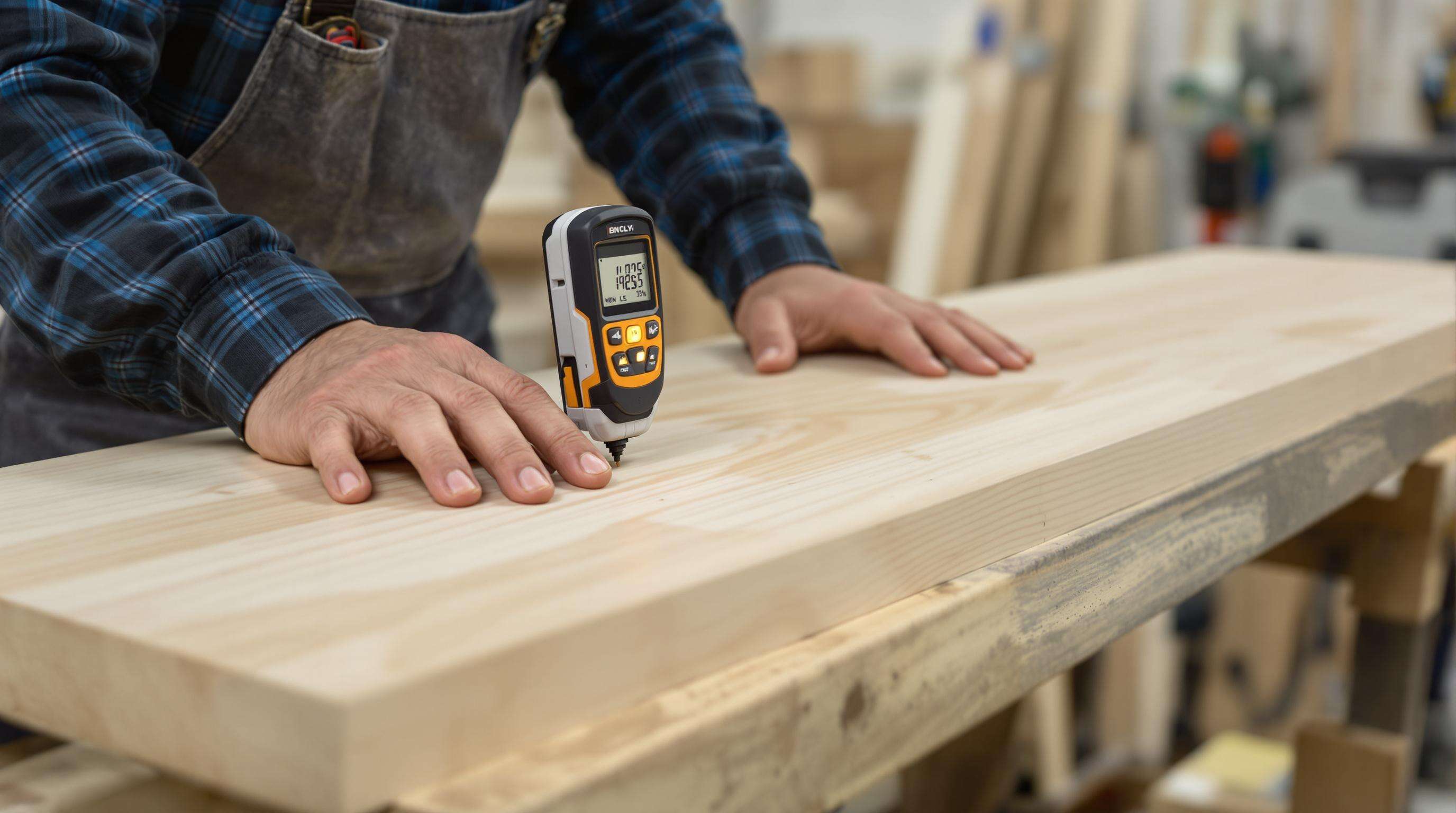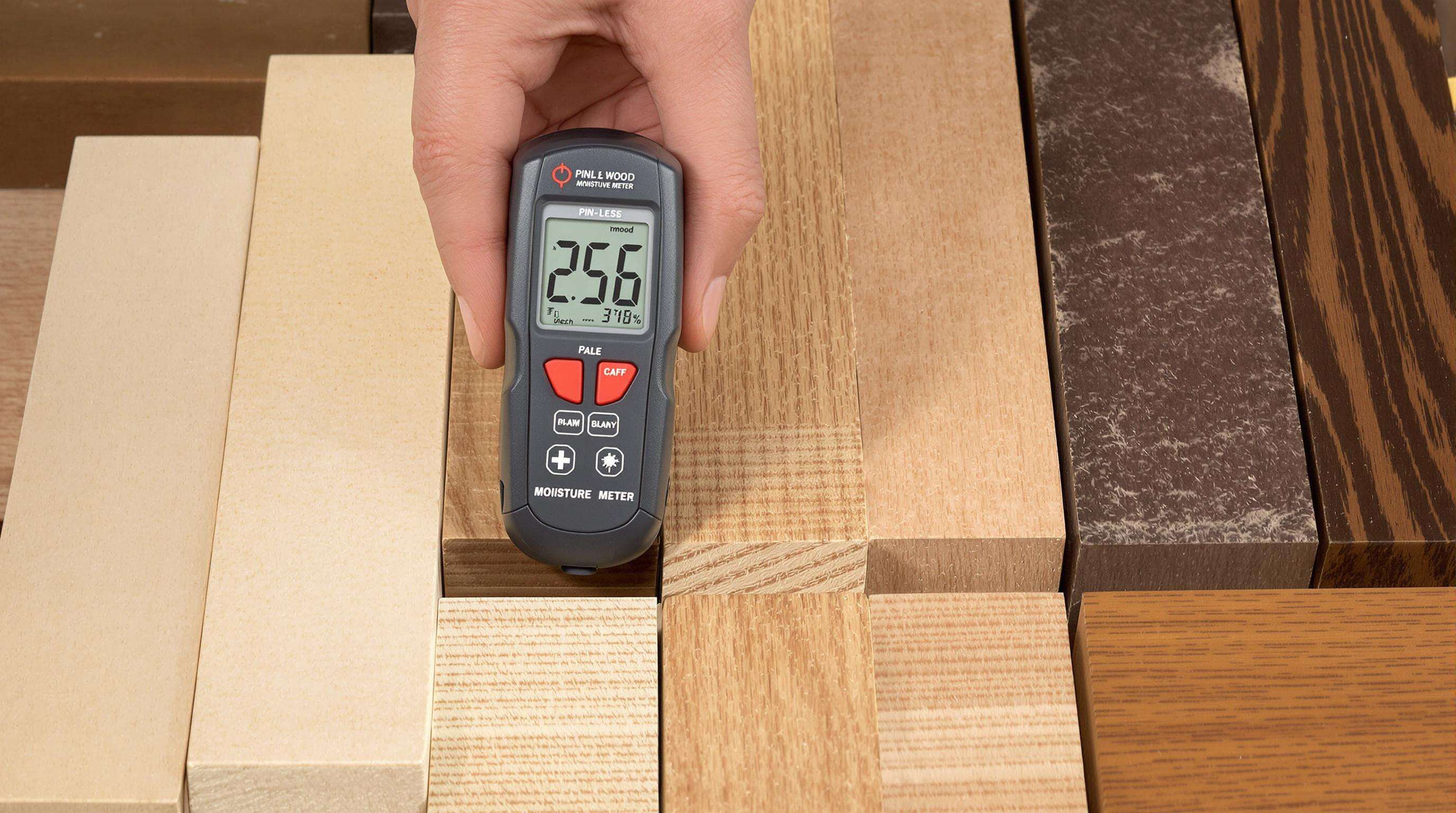
Pinless moisture meters use electromagnetic waves to measure moisture content in wood without surface penetration. These devices emit low-frequency signals that interact with water molecules beneath the material's surface, calculating moisture percentages through proprietary algorithms. High-end models feature dual-depth scanning (¼" and ¾") to identify sub-surface moisture pockets in thick lumber.
This non-destructive method preserves material integrity, making it ideal for inspecting finished boards, furniture-grade stock, or moisture-sensitive composites. Unlike pin meters, it requires no direct contact with internal wood fibers.
| Feature | Pinless Meters | Pin Meters |
|---|---|---|
| Technology | Electromagnetic wave analysis | Electrical resistance measurement |
| Measurement Depth | Up to ¾" without surface damage | Adjustable via pin length |
| Speed | 3-5 seconds per scan | 10-15 seconds per pin insertion |
| Material Impact | No visible marks | Leaves dual pinholes per test |
Pinless models excel in high-volume lumber yards, with 60% faster inspection cycles compared to pin-based methods. Their wide scanning surface (2-3" diameter) provides instant moisture mapping, reducing sampling errors.
Non-destructive moisture analysis prevents three critical issues:
The National Hardwood Association found that 23% of kiln-dried lumber developed surface checking after invasive testing — defects avoided with pinless meters. For premium species like figured walnut, where appearance drives 78% of market value (Forest Products Lab 2024), non-invasive methods preserve value.
Pinless meters require material-specific calibration for accurate readings:
| Material Type | Calibration Offset | Adjustment Factor |
|---|---|---|
| Hardwood (Oak) | +18% | Density compensation |
| Softwood (Pine) | -5% | Resin content adjustment |
| Engineered Lumber | +25% | Adhesive interference |
Modern devices include preloaded profiles, but custom calibration using verified samples ensures precision.

Thermal expansion causes 0.3% moisture reading variance per °F (ASTM D4444-2024), making compensation essential. Advanced meters feature:
These features reduce temperature-related errors by 72%.
Three frequent mistakes account for 89% of inaccuracies (NWFA 2023):
Best practices:
Wood species impact calibration significantly:
AI-powered species recognition now achieves 99.1% profile matching accuracy.
For accurate high-volume scanning:
These techniques reduce errors by 32% compared to random scanning.
A Midwest oak processor achieved 22-second inspection times (from 37 seconds) by:
Daily throughput increased from 380 to 635 boards per inspector.
IoT-enabled meters provide:
This reduces manual entry errors by 78% and accelerates certification by 2.3 workdays.
Use this hybrid approach:
| Scenario | Pinless Action | Pin Verification Threshold |
|---|---|---|
| Figured walnut | Surface scan | 12% MC reading |
| End-grain checking | 3-point average | 4% variance |
| Mixed-species pallets | Species profile scan | 18% MC result |
This maintains <0.5% accuracy degradation at 800+ inspections daily.
Next-gen meters feature:
These systems reduce inspection time by 33% while improving defect detection.
AI now predicts equilibrium moisture content (EMC) with 98% accuracy by analyzing 50,000+ samples. Future developments may include:
These advancements will further streamline lumber quality control while maintaining measurement precision.
Pinless moisture meters are non-destructive, prevent surface damage, offer faster readings, and eliminate risks associated with moisture redistribution and cross-contamination.
They use electromagnetic waves to measure moisture content without penetrating the surface of the wood, which allows them to calculate moisture percentages using specific algorithms.
Pinless moisture meters use electromagnetic wave analysis and don't damage surfaces, whereas pin moisture meters rely on electrical resistance and leave small pinholes.
Calibration ensures accurate moisture readings by adjusting for specific wood properties like density and temperature, reducing potential errors in measurements.
 Hot News
Hot News